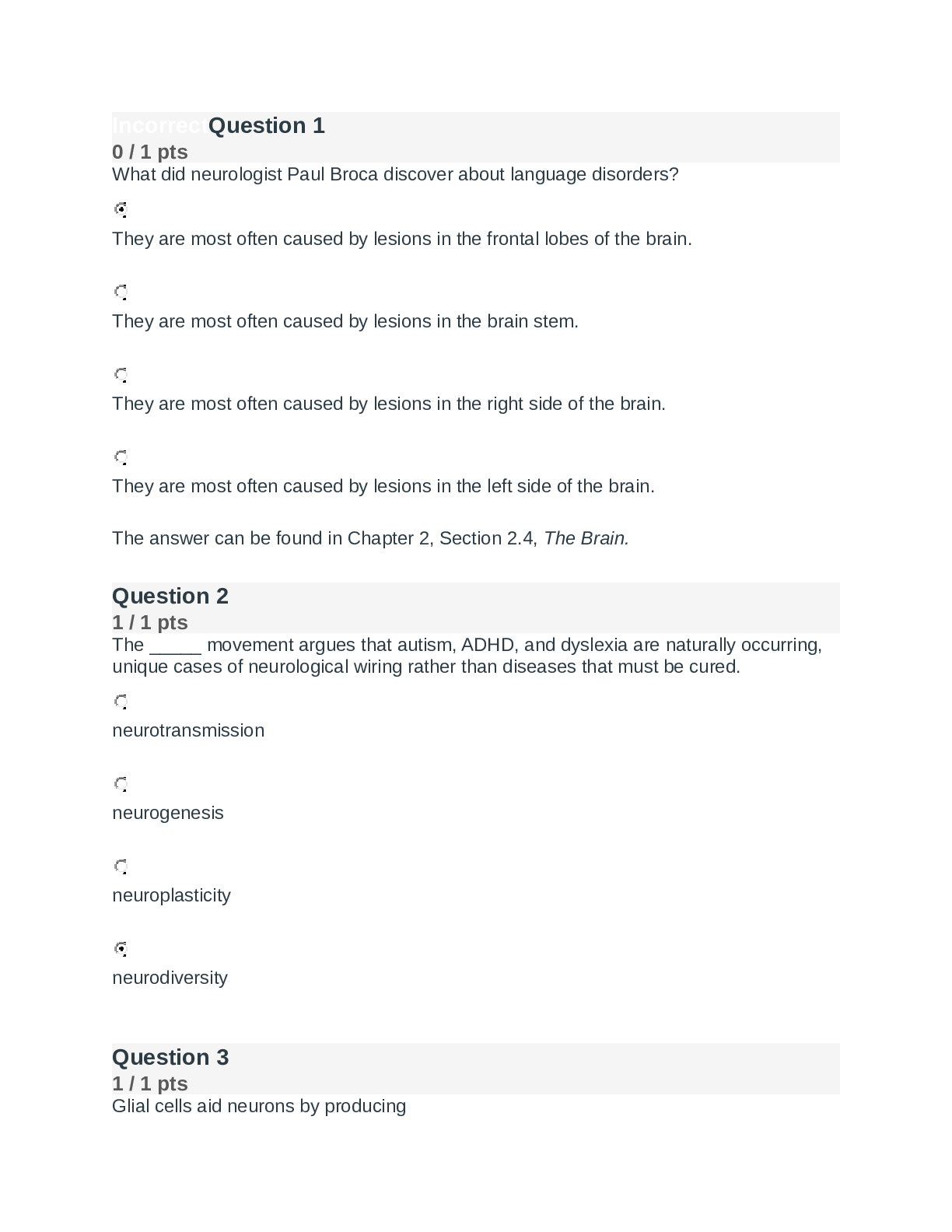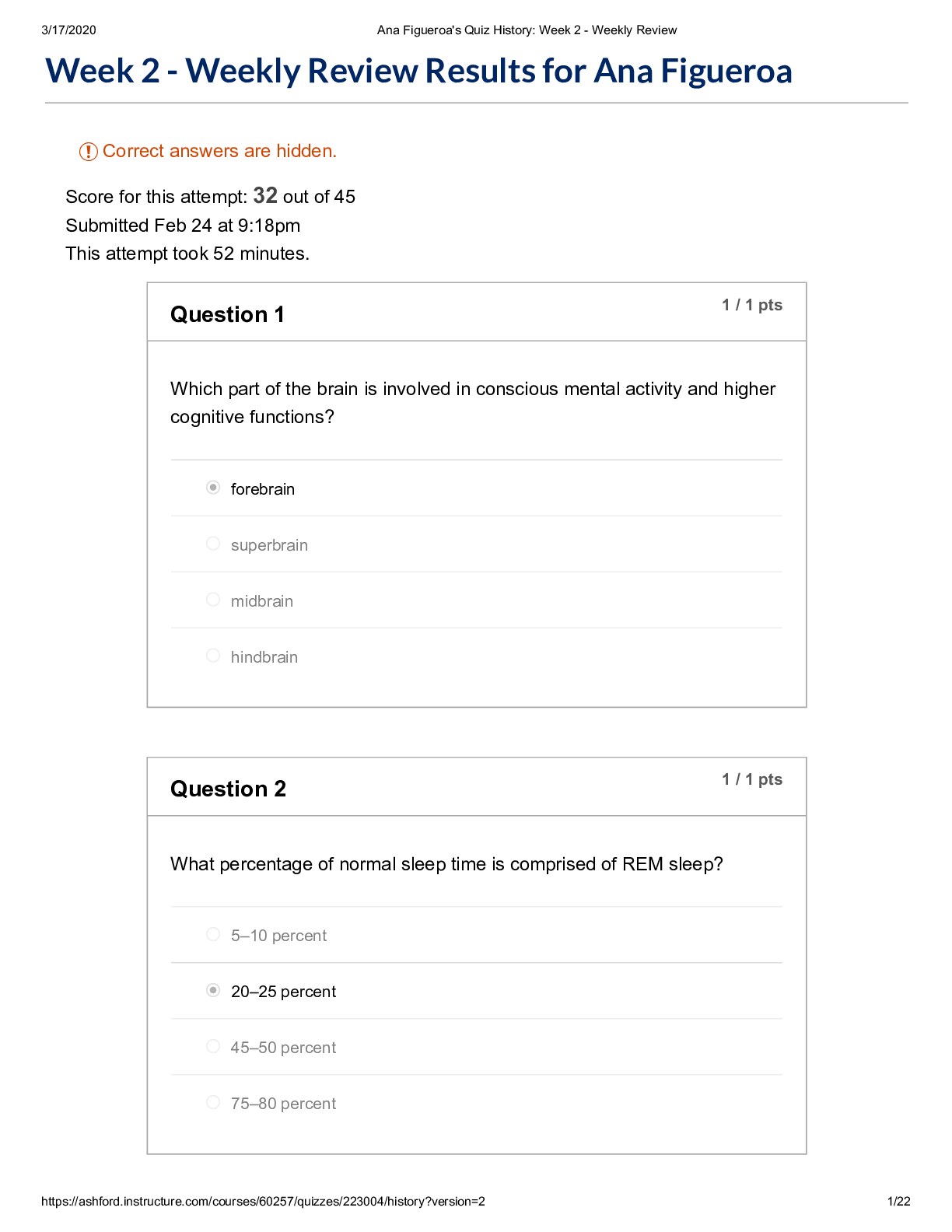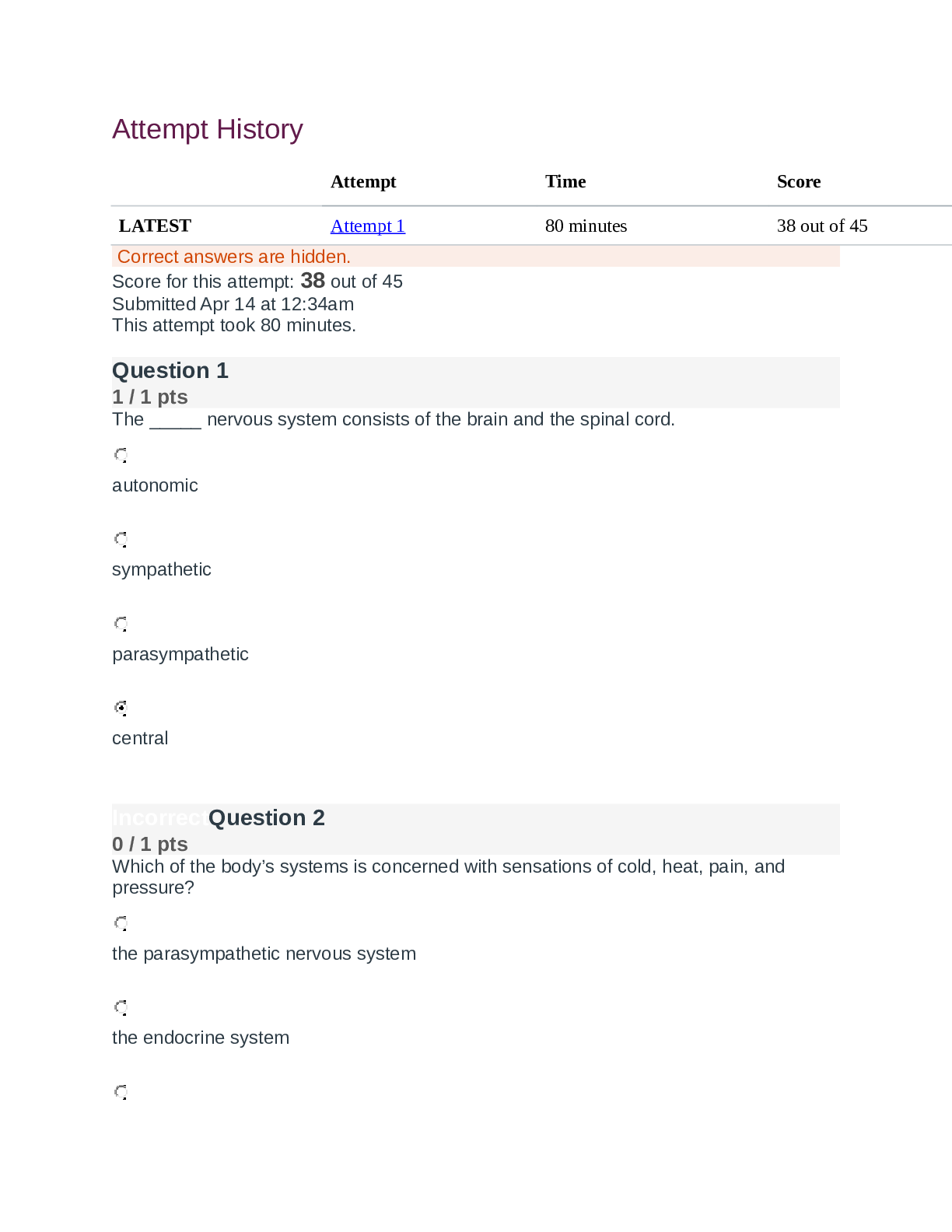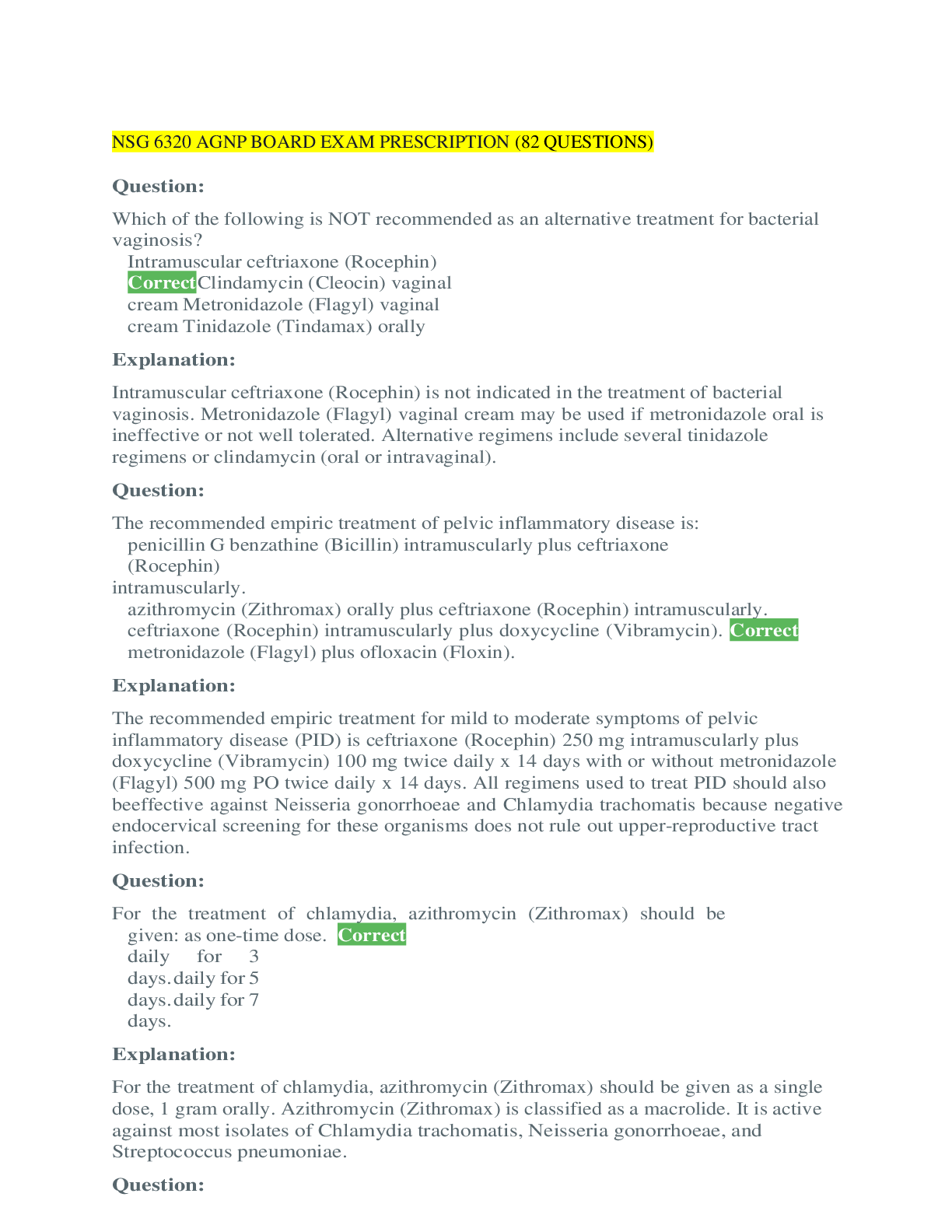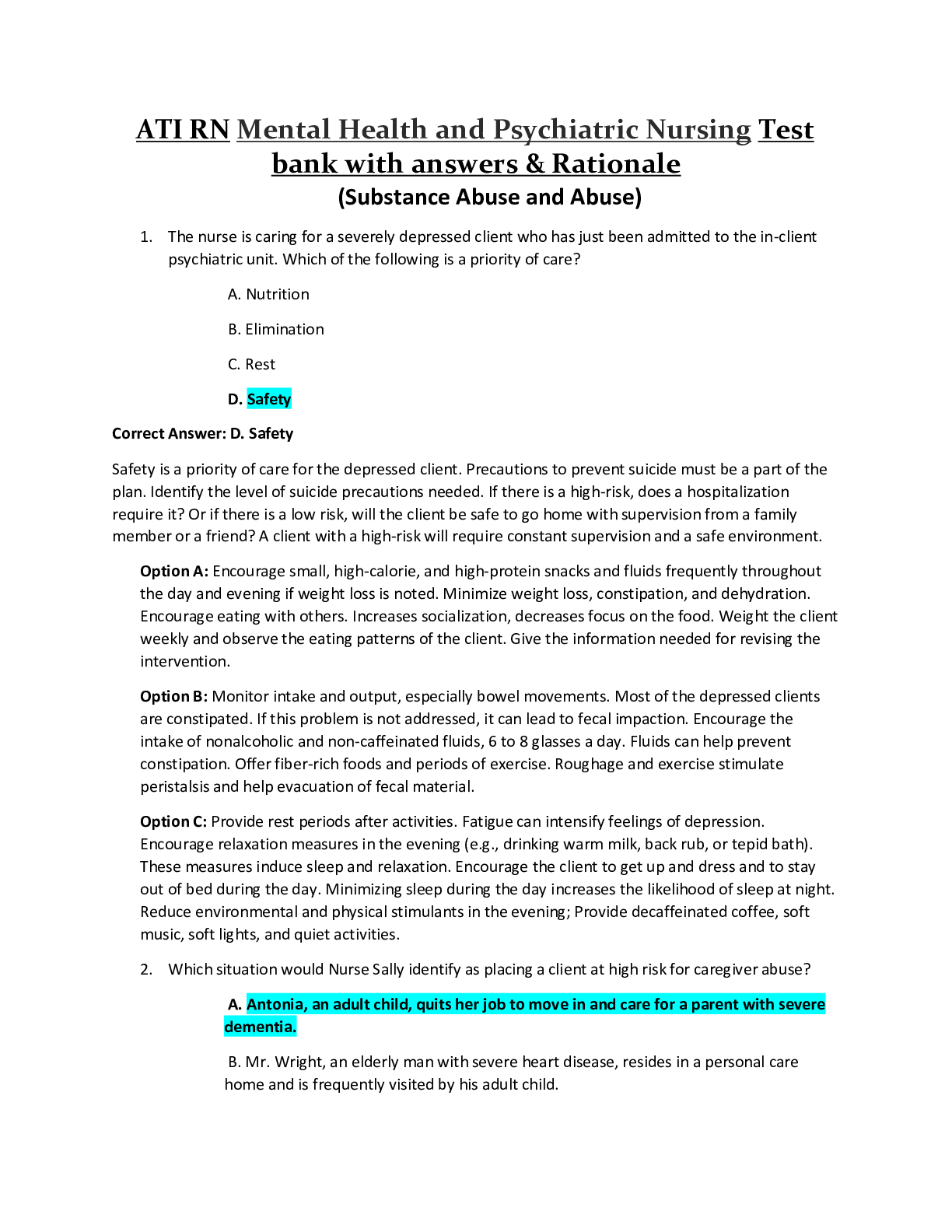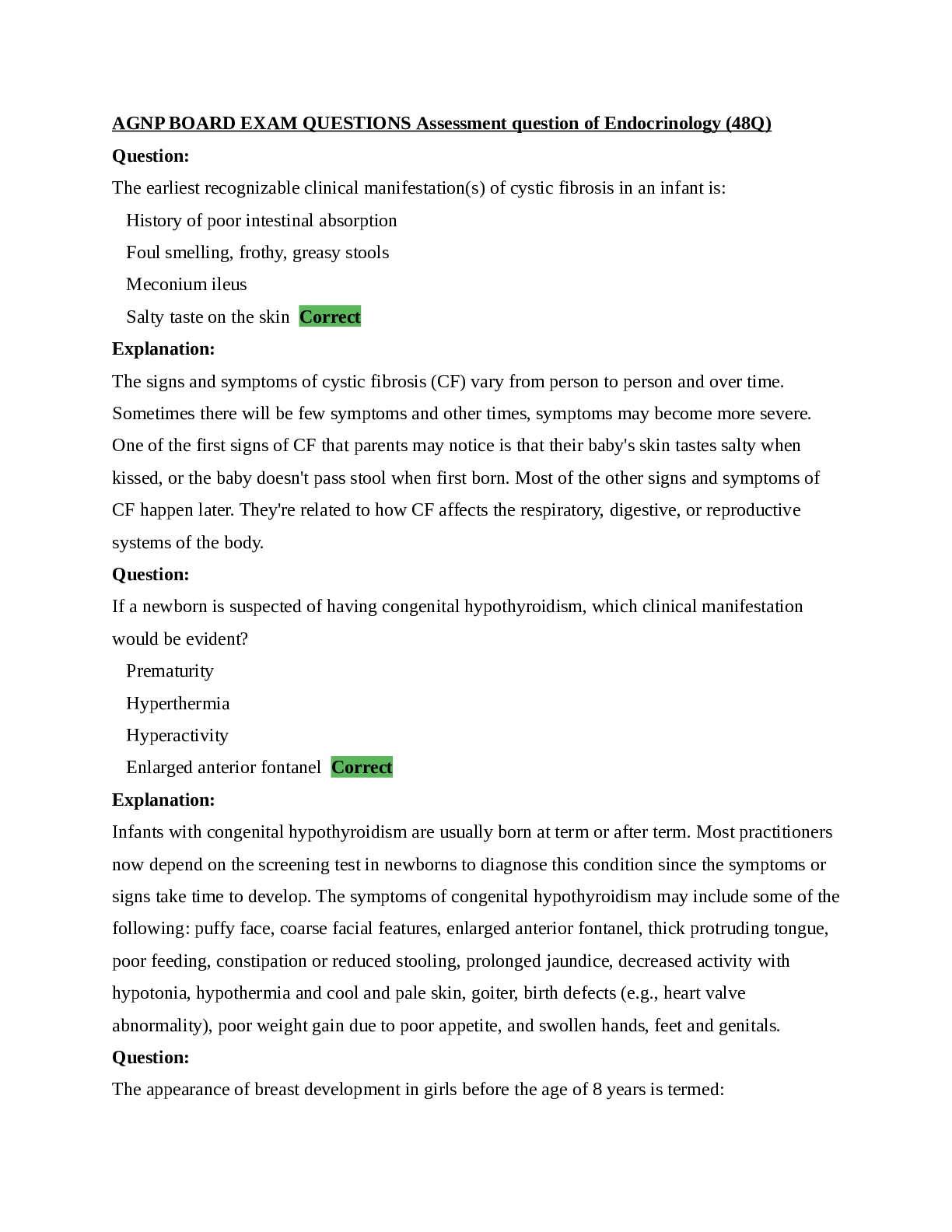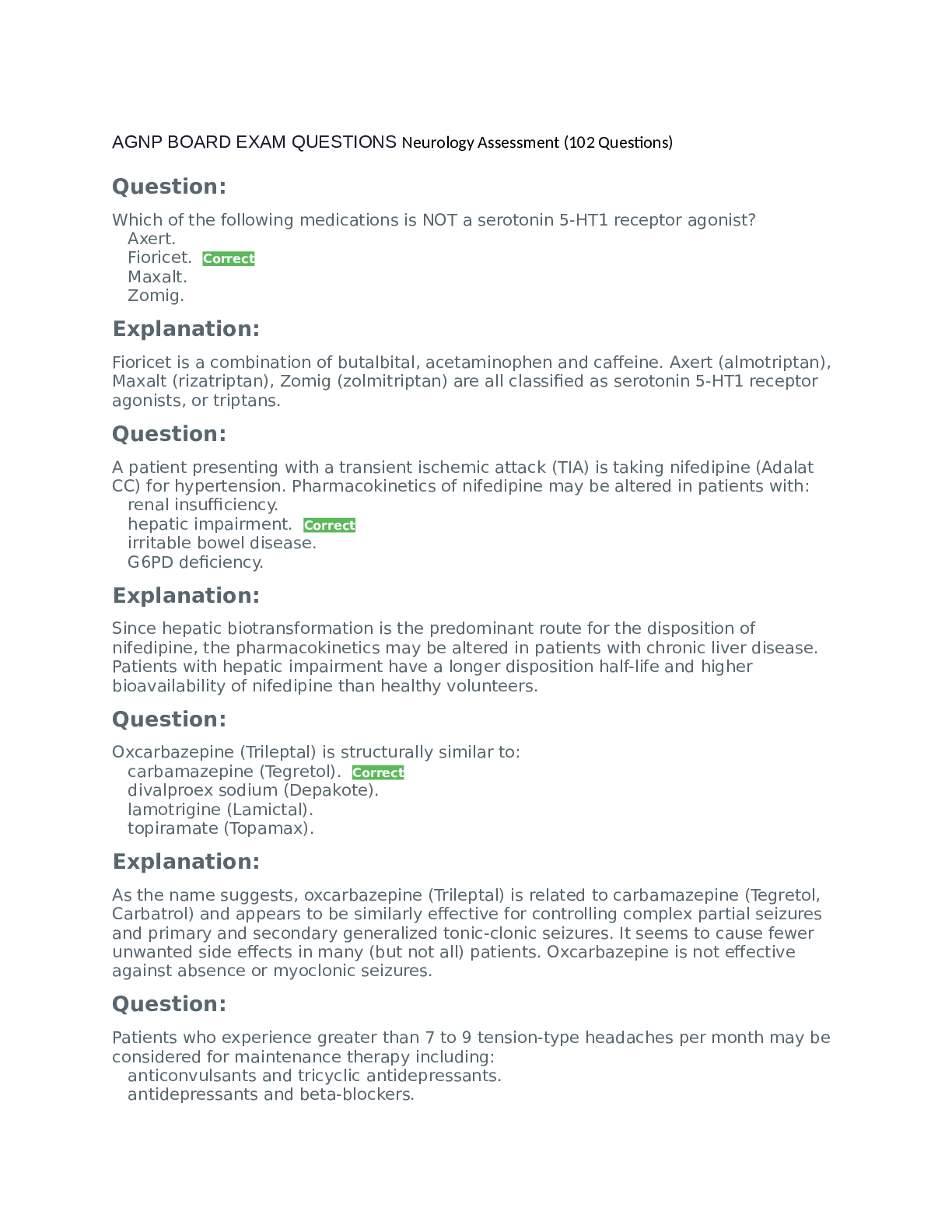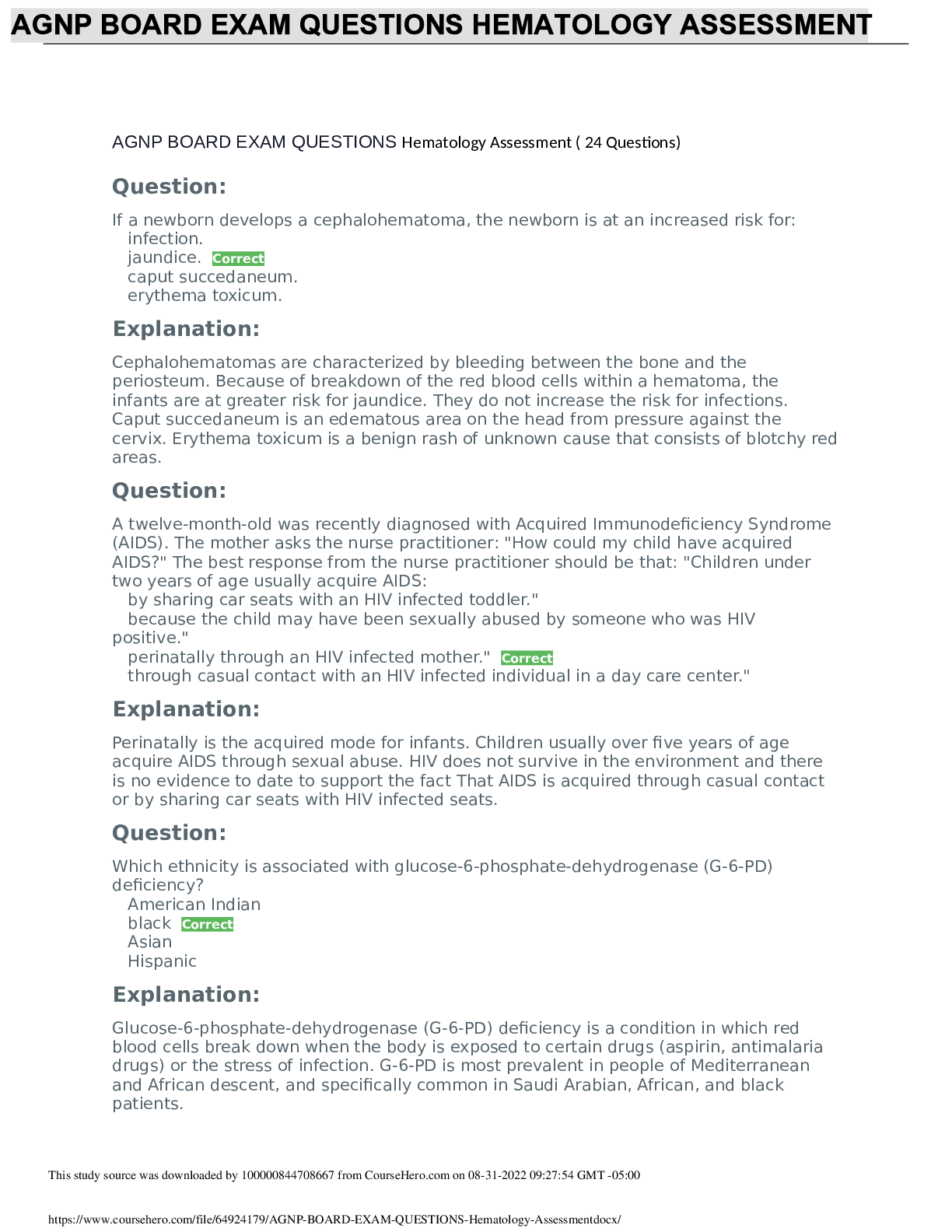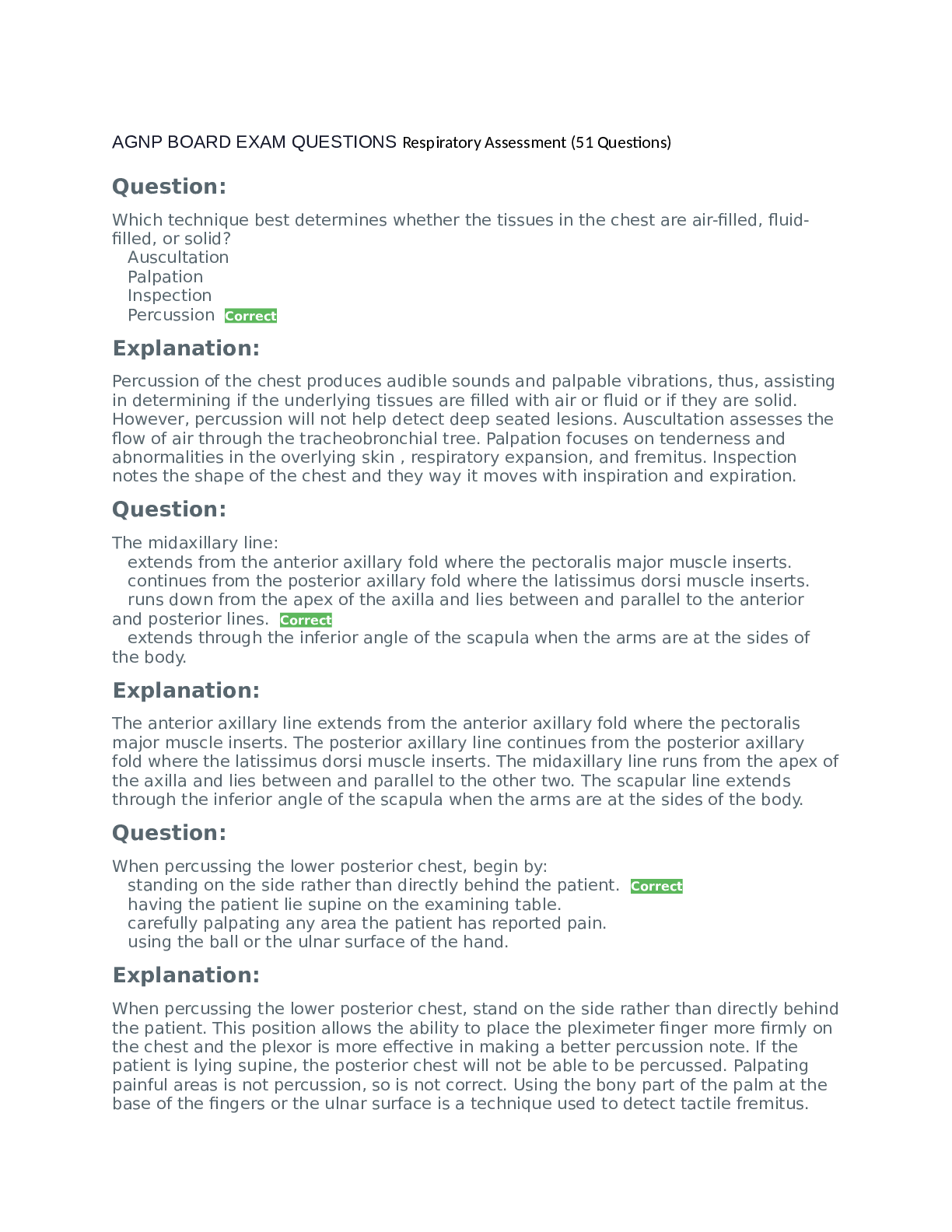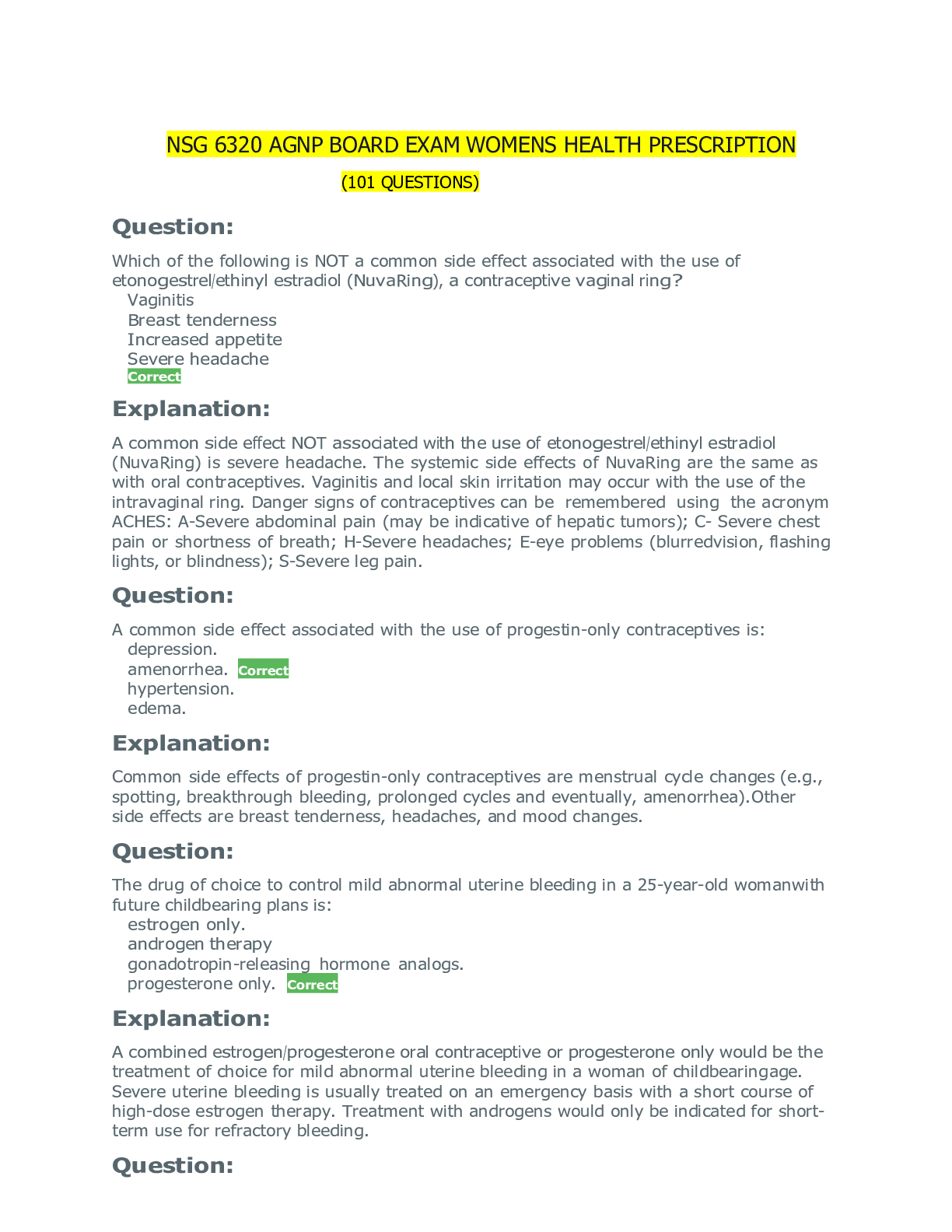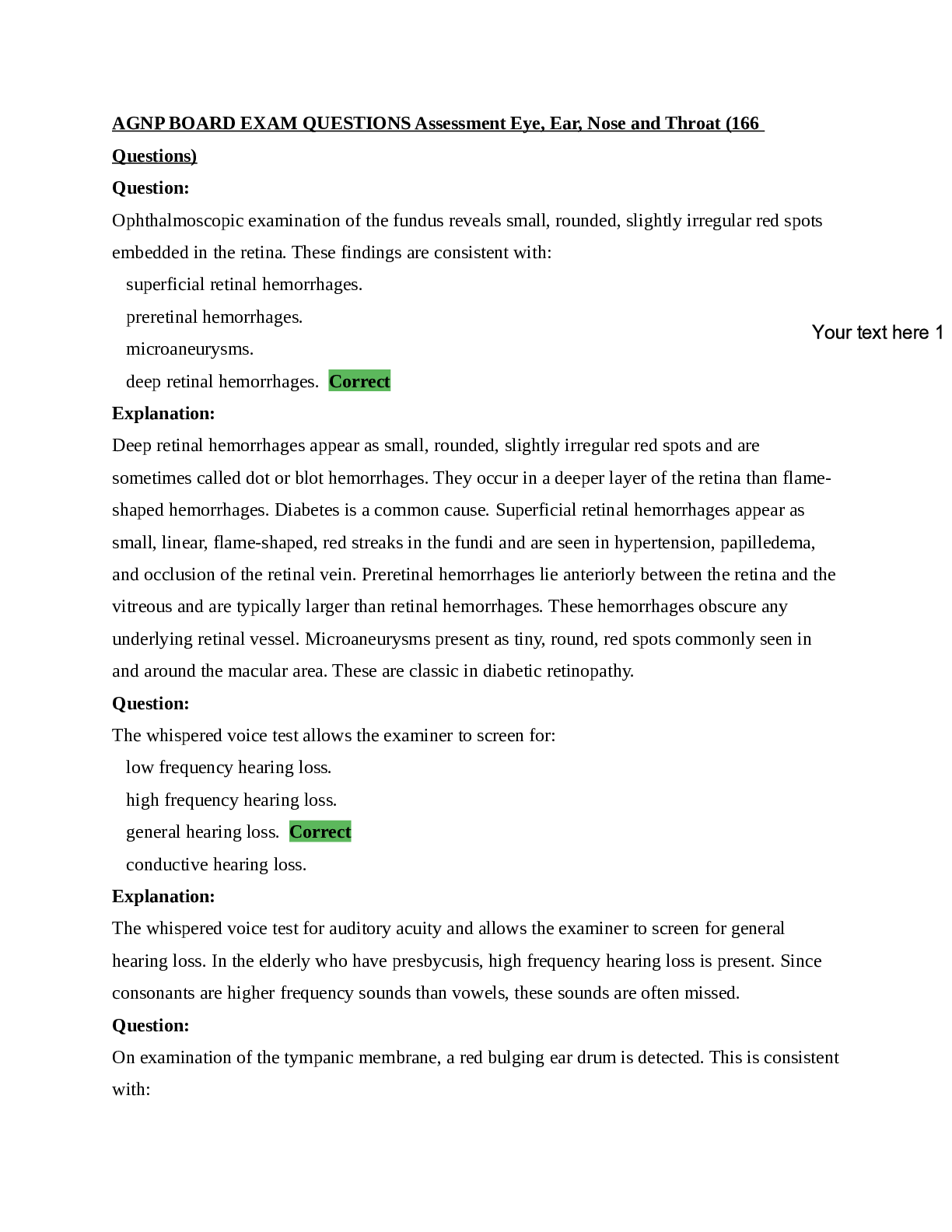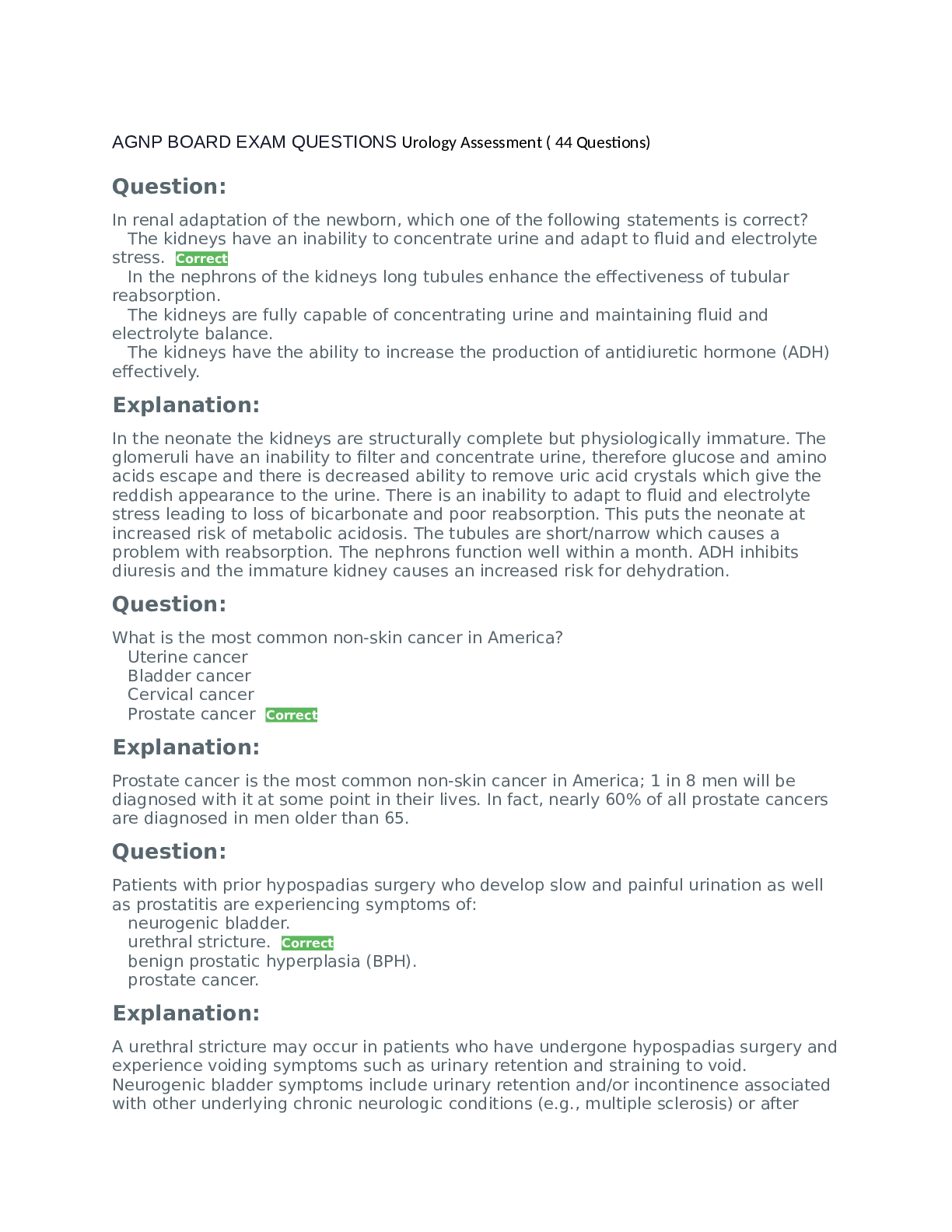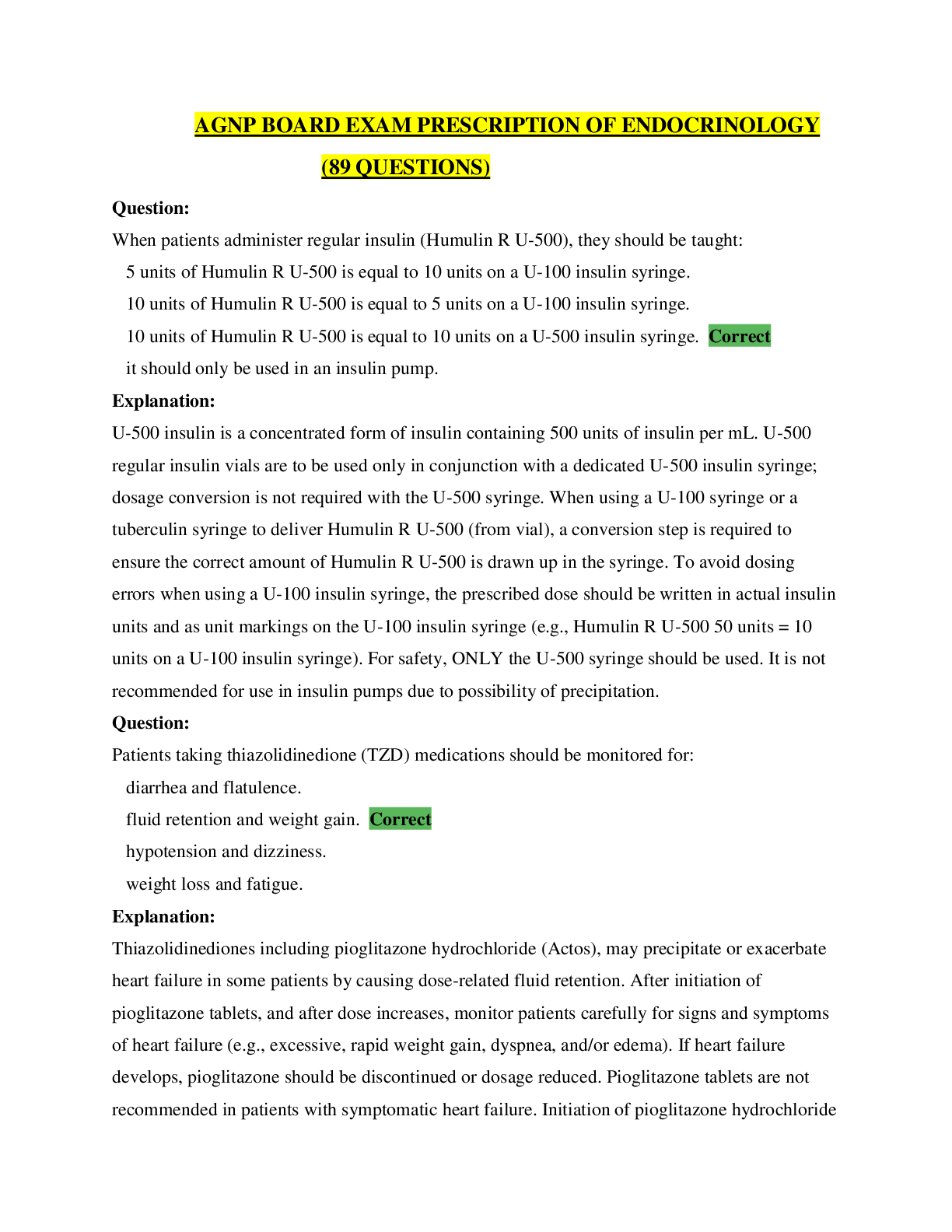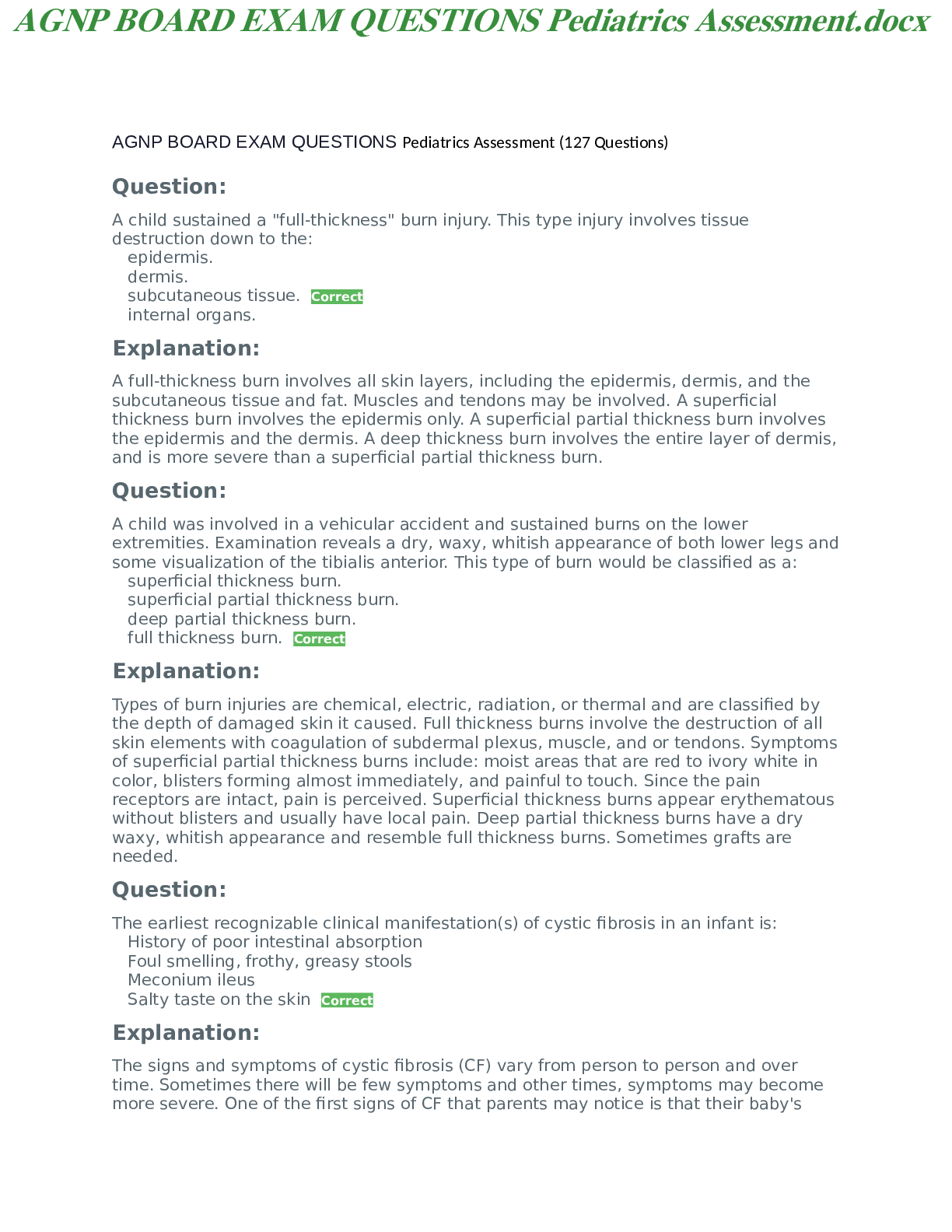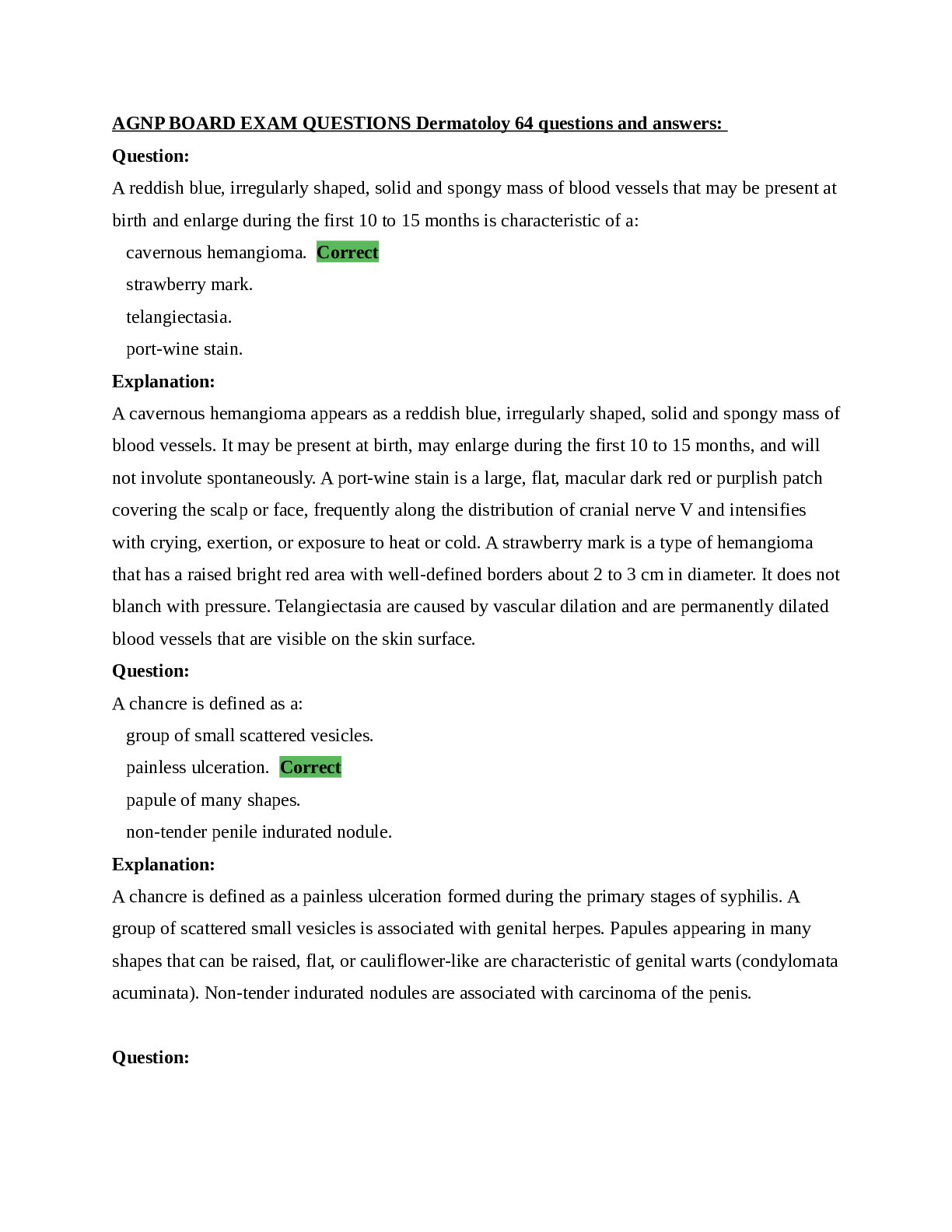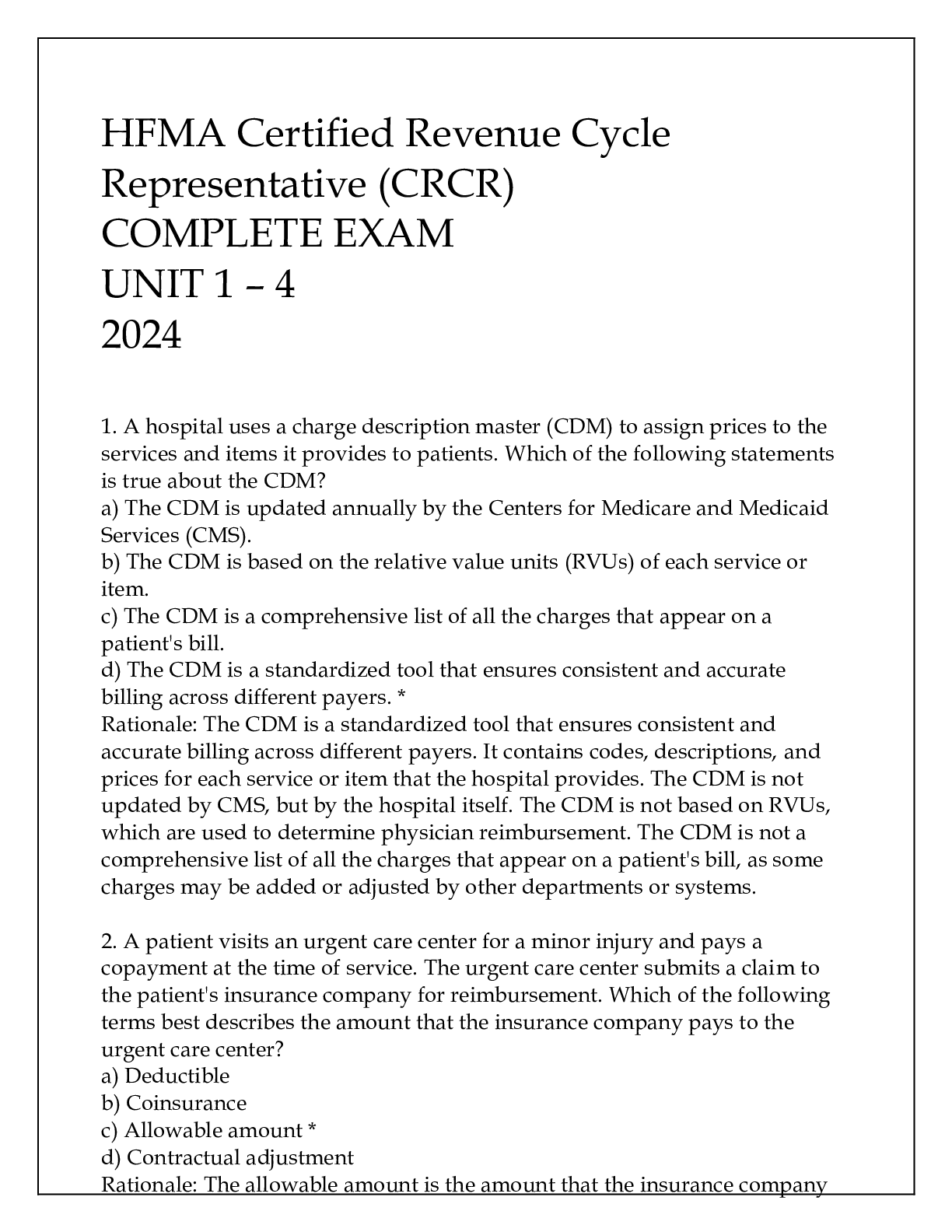*NURSING > EXAM REVIEW > South University, Savannah NSG 6320AGNP BOARD EXAM QUESTIONS Dermatology PRESCRIPTION 2021 WITH ANSW (All)
South University, Savannah NSG 6320AGNP BOARD EXAM QUESTIONS Dermatology PRESCRIPTION 2021 WITH ANSWERS & EXPLANATIONS
Document Content and Description Below
AGNP BOARD EXAM: Dermatology Prescription (100 Questions and Answers) Question: Systemic ivermectin (Stromectol), classified as an antiparasitic,: is primarily excreted in the urine. crosses the b... lood-brain barrier. has a high concentration in the liver. Correct is not well absorbed. Explanation: Systemic ivermectin (Stromectol) is well absorbed and is primarily excreted in the feces. It is distributed and highly concentrated in the liver and adipose tissue. It is primarily bound to albumin, with a half-life elimination of 18 hours. Time to peak serum is about 4 hours. Question: Topical permethrin (Elimite) in the treatment of scabies should be left in place for a minimum of: 30 minutes. 2 hours. 6 hours. 8 hours. Correct Explanation: Patients should massage permethrin cream (Elimite) thoroughly into the skin from the neck to the soles of the feet, including areas under the fingernails and toenails. Thirty grams is usually sufficient for an average adult. The hairline, neck, temples, and forehead may be infested in infants and geriatric patients. In these populations, permethrin should also be applied to the scalp and face, sparing the eyes and mouth. The cream should be removed by washing (shower or bath) after 8 to 14 hours. Question: The mechanism of action of clindamycin (Cleocin), used in the treatment of cellulitis, is to: block synthesis of folic acid by bacteria and inhibit replication. uncouple mitochondrial oxidative metabolism and inhibit cell growth. block the dissociation of peptidyl tRNA from ribosomes. inhibit protein synthesis by preventing ribosomal translocation. Correct Explanation: Sulfa agents block synthesis of folic acid by bacteria and thus inhibit bacterial replication. Firstgeneration cephalosporins inhibit cell wall synthesis of bacteria. Antifungals uncouple mitochondrial oxidative metabolism and inhibit cell growth. Macrolides inhibit bacterial growth, possibly by blocking dissociation of peptidyl tRNA from ribosomes, causing RNA-dependent protein synthesis to arrest. Other antibacterials are bacteriostatic or bactericidal and inhibit protein synthesis by preventing ribosomal translocation [Show More]
Last updated: 1 year ago
Preview 1 out of 38 pages
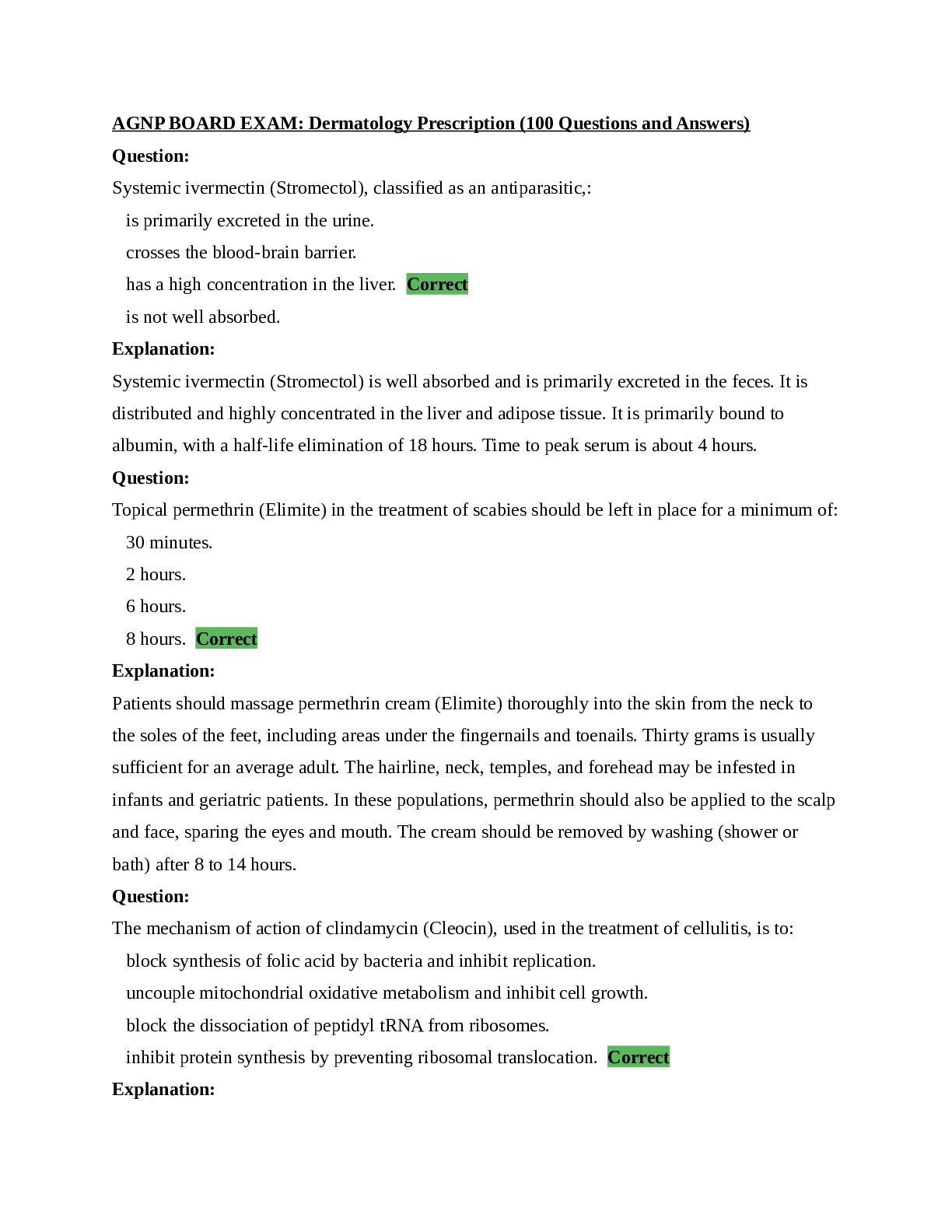
Reviews( 0 )
Document information
Connected school, study & course
About the document
Uploaded On
Sep 12, 2021
Number of pages
38
Written in
Additional information
This document has been written for:
Uploaded
Sep 12, 2021
Downloads
0
Views
68


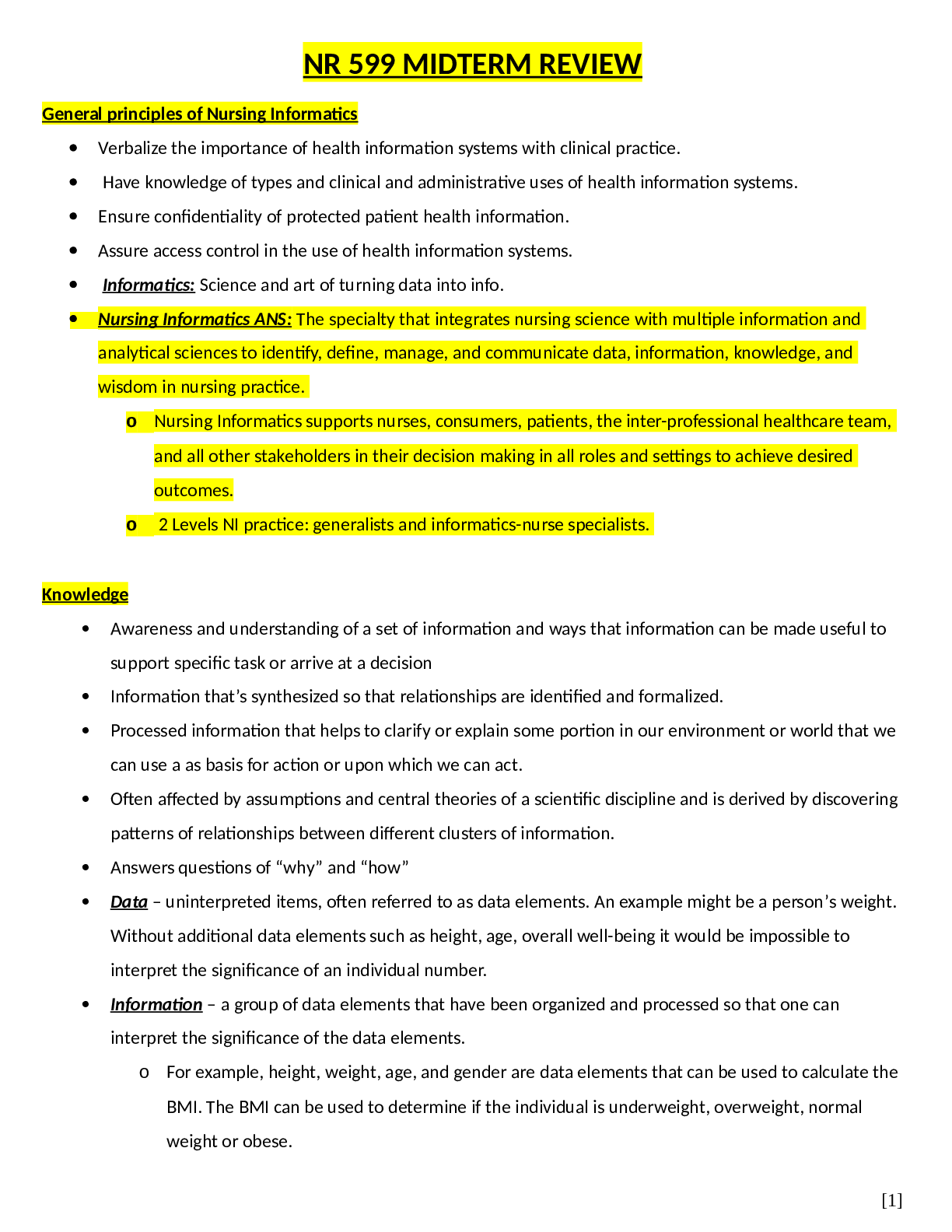
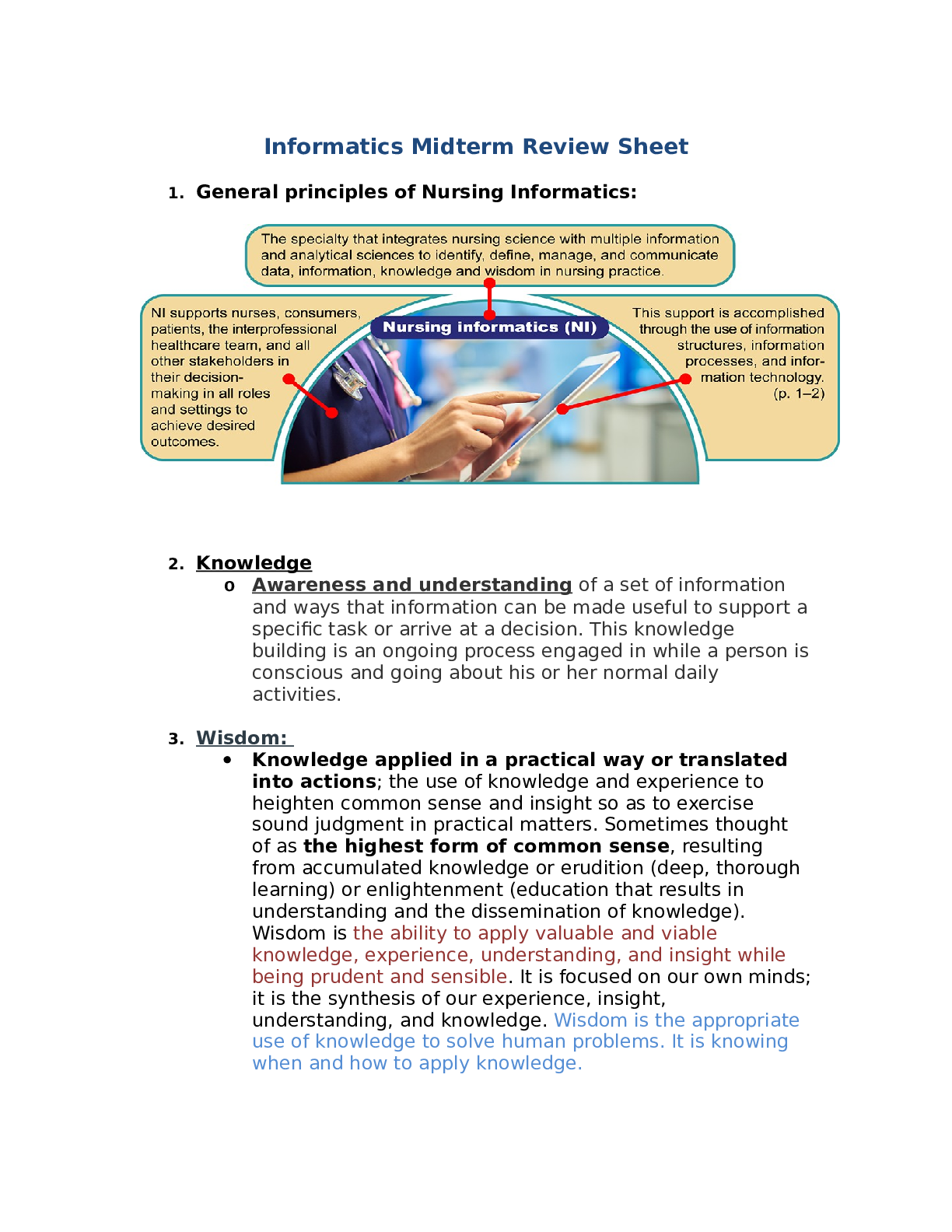
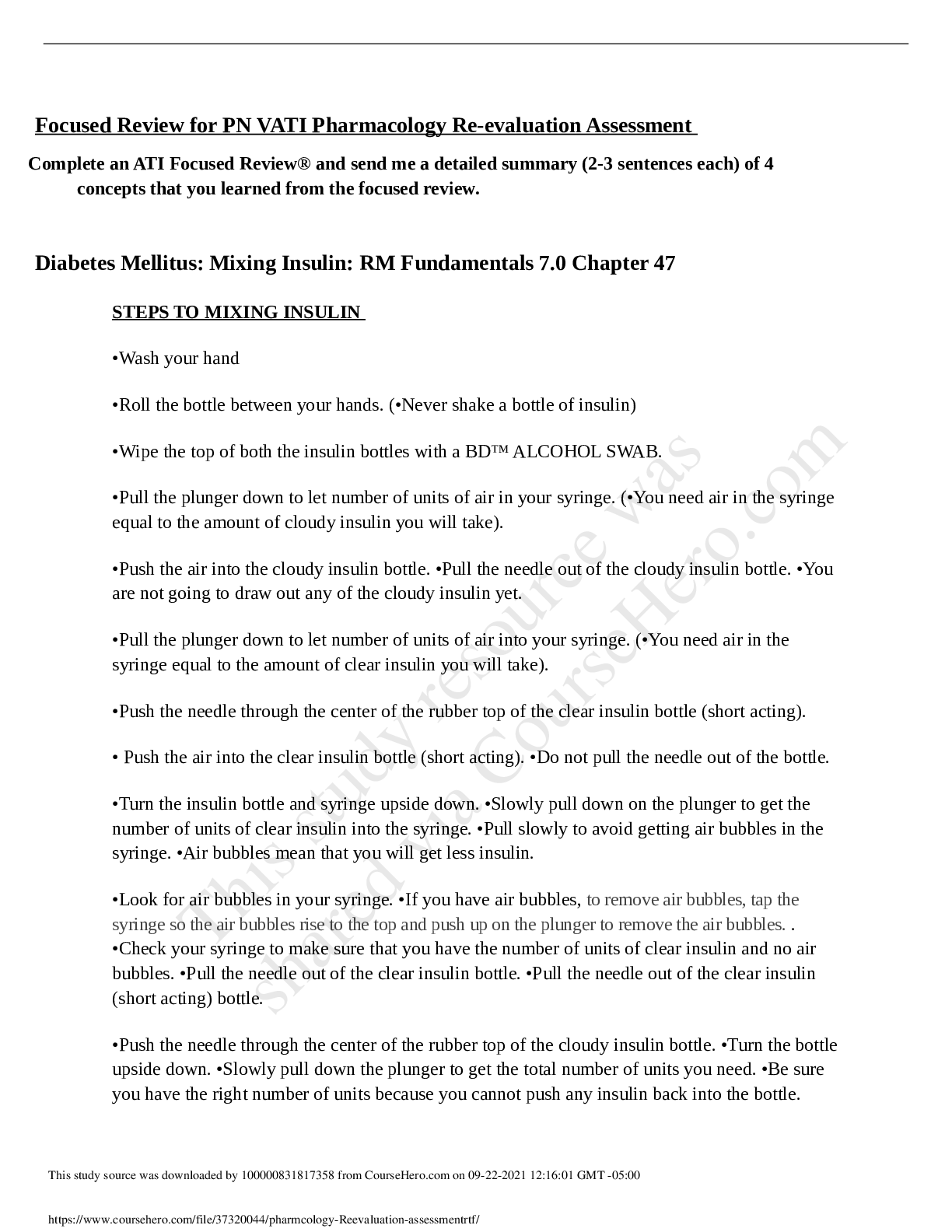
.png)
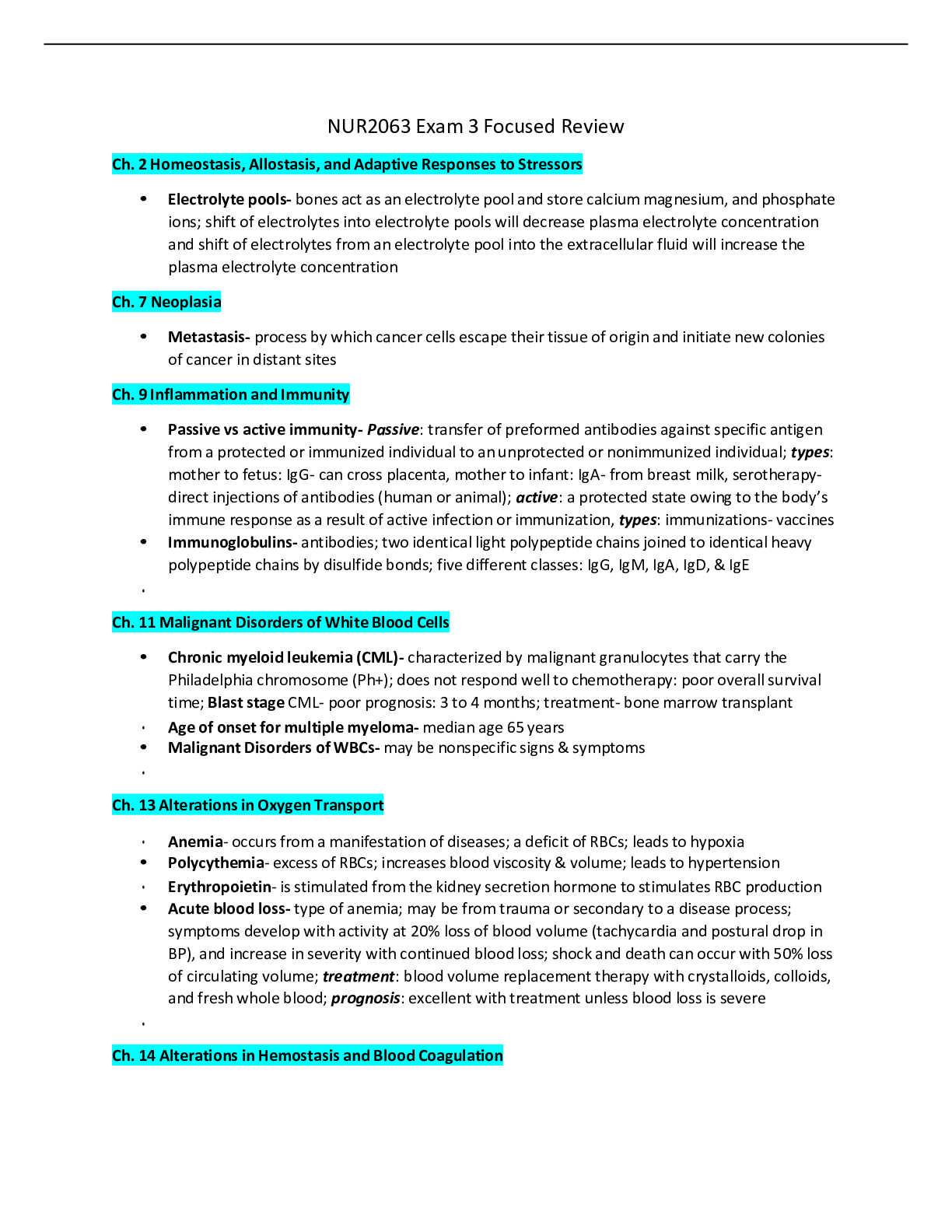
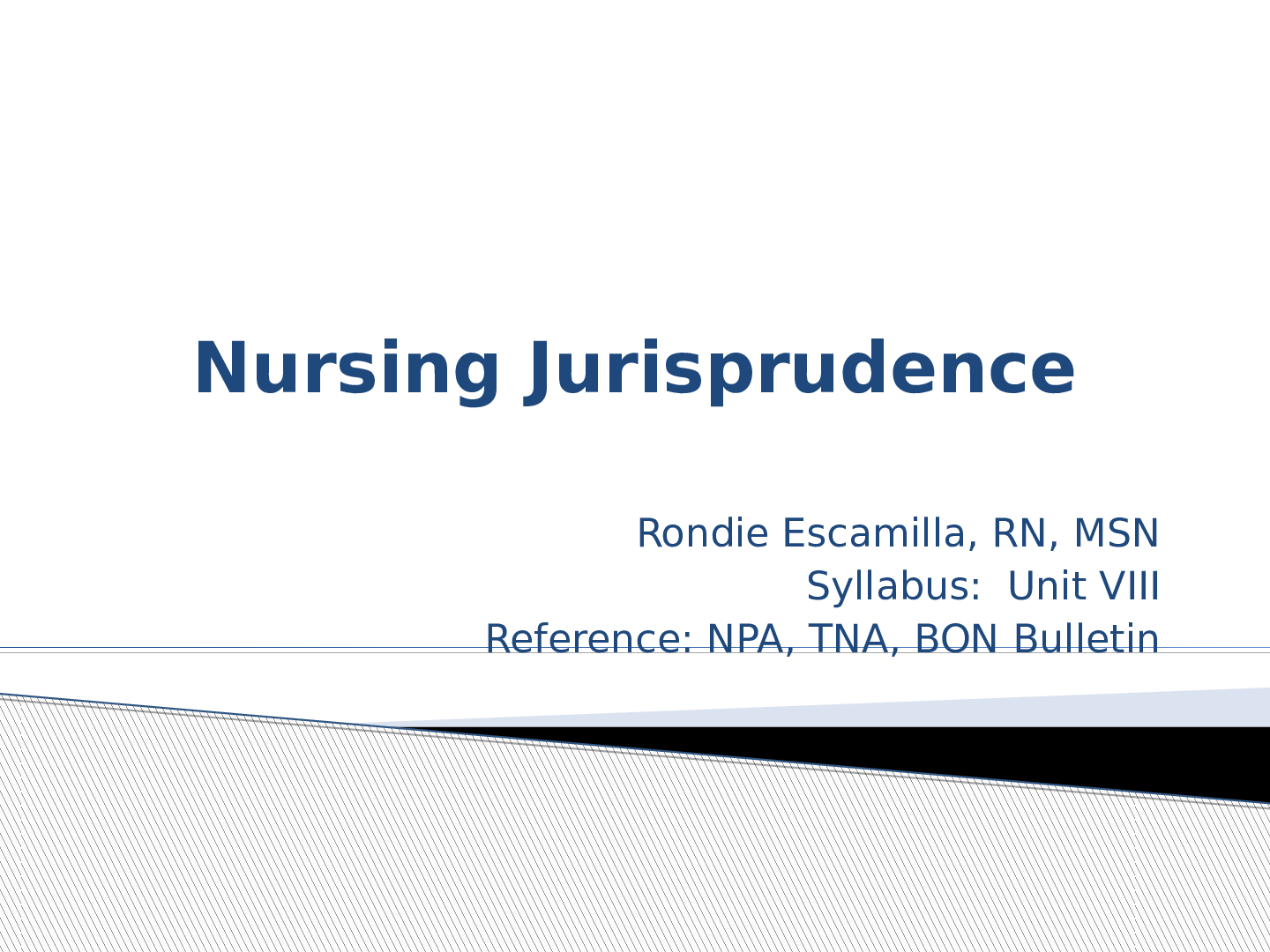
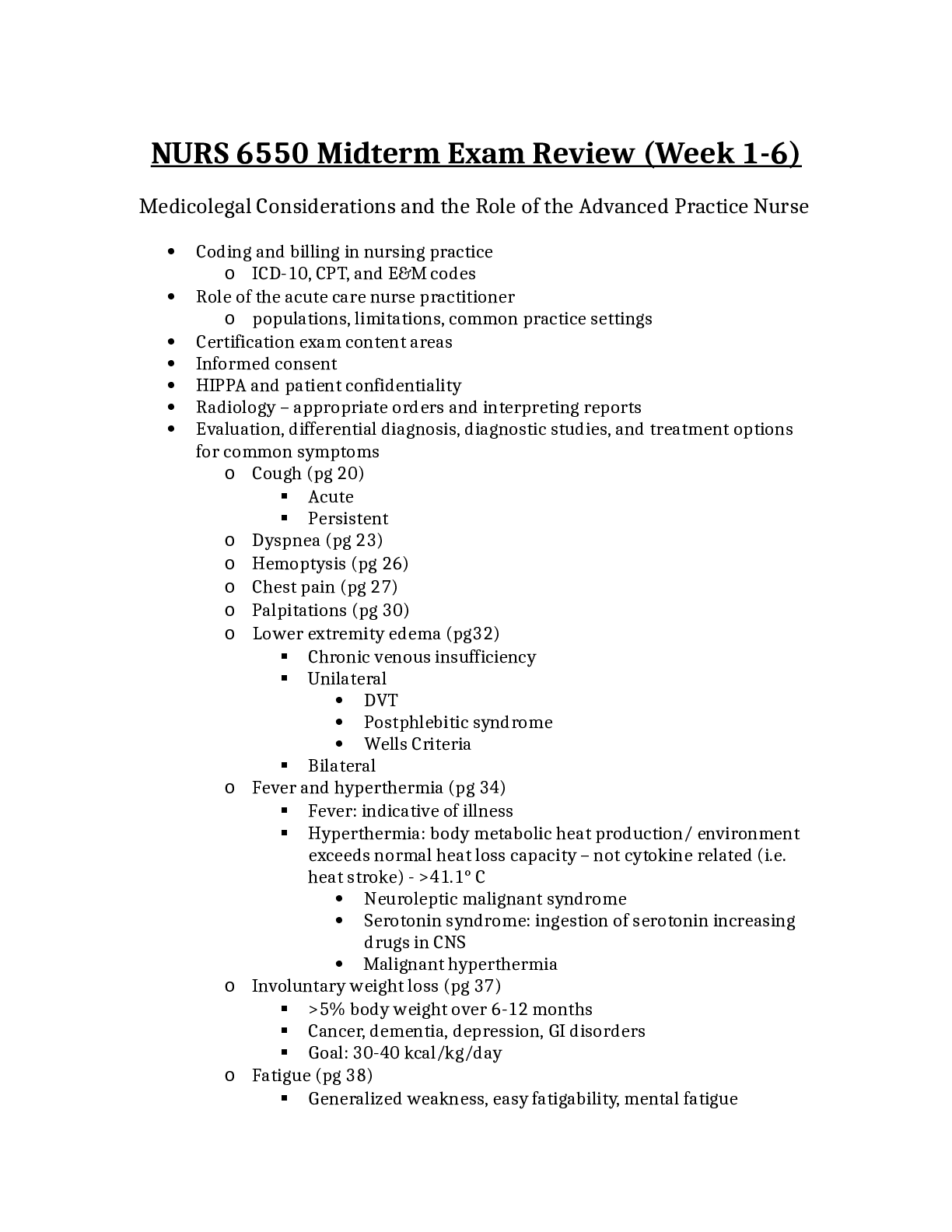
.png)
